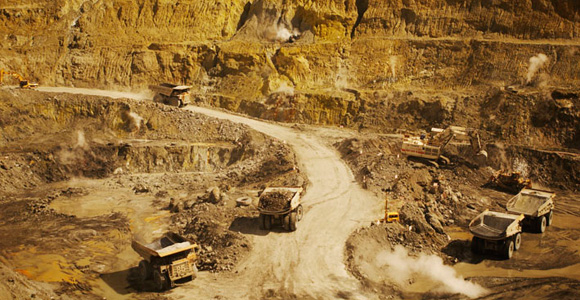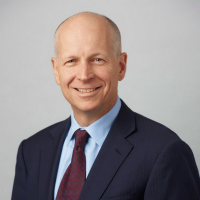The global mining industry is still in a ‘big hangover’, says Newcrest Mining’s Chief Development Officer, Michael Nossal. He tells an industry event that improving productivity is now the name of the game, as the industry waits for the interest from investors to return.

The Lihir gold mine. Credit: Newcrest
Speaking at the International Mining and Resources Conference in Melbourne late last year, Michael Nossal, Chief Development Officer for Newcrest Mining, said there is an industry-wide push to improve productivity.
‘I think we are all, in our various ways, really starting to put some focus on delivering additional productivity, including delivering with low grade ores.
‘We are a long way from the capital markets coming back to us.
‘The valuations aren’t yet at those heady levels.
‘So, when a truck driver comes along and says pay me US$250,000 to drive those trucks, you just do it.’
‘At Newcrest, the way we think about our assets and operations (has changed) in terms of four years ago.
‘Systems and processes are part of that: we are having a look at all the things that we do—taking the noise out of the business and letting people focus on what generates the cash.
‘How long it will last will depend on the (commodity) price response and also on when the value comes back into the market valuations.’
Booms and busts

Newcrest’s Michael Nossal. Credit: IMARC
Nossal said that there was a boom in exploration in the 1980s. When that stopped in the 1990s, companies had to ‘squeeze out’ their capital.
‘Then we had a great big party. It started in 2003-4 and that structural shift from China.
‘(China went from having) roughly 10 per cent of most minerals demand in the world to moving up, over about seven-to-10 years, to 50 per cent.
‘That just drove that marginal demand.
‘You could argue in one way that the operators’ response to that was entirely rational … because the margins were so strong.
‘We got the numbers wrong—not just on the price side but also on the capital cost side.’
‘So, when a truck driver comes along and says pay me US$250,000 to drive those trucks, you just do it.
‘That is how we lost that drive to squeeze capital. We also spent an enormous amount of capital building capacity.
‘We got the numbers wrong—not just on the price side but also on the capital cost side.
‘Part of that is just the nature of a construction boom, where instead of getting your A team on a project you were down to your C teams in most projects just because the demand for engineering and construction workers was so great.
‘It was OK at the time because everyone was making a lot of money and the markets were fuelling it.’
Exploration dip
Nossal said that the mining industry is ‘still in a big hangGlobal mining industry still recovering from a ‘great big party’over’ from the boom.
‘The super cycle was a particularly long one, and the adjustment is going to be quite a long one as well.
If we look at the all in sustaining cost in the last three or four years everyone has done, to varying degrees, a good job of getting it down.
‘It left us with a whole stack of legacies, structural impediments to our industry.’
‘But now we have almost stopped exploring.’
Nossal noted in 2004 that global expenditure on exploration was roughly US$4.5 billion.
‘We are down to US$1-1.5 billion these days. That is going to lead to a shortage of good projects.
‘So then the cycle has to start again.’
Volume over value
Mitch Hooke, Chairman of Partners in Performance, said the boom between 2003-4 and 2015 was driven by a ‘volume over value drive’.
‘It left us with a whole stack of legacies, structural impediments to our industry. ‘Most of it was self-inflicted.’
Hooke said globally there is a two-to-one ratio of brownfields exploration to greenfields exploration.
‘The skills development capabilities are just starting to catch up again.
‘Capital discipline is emerging, there is improving productivity.
‘Returns on capital are all improving across the board.’








Speak Your Mind